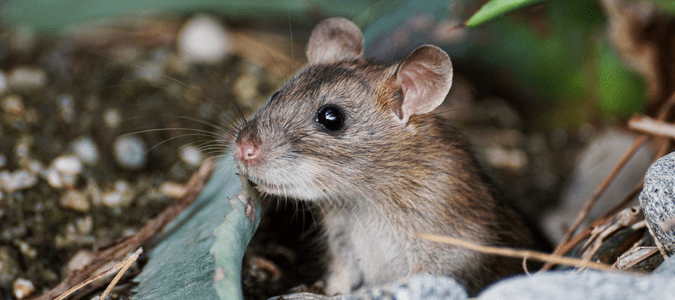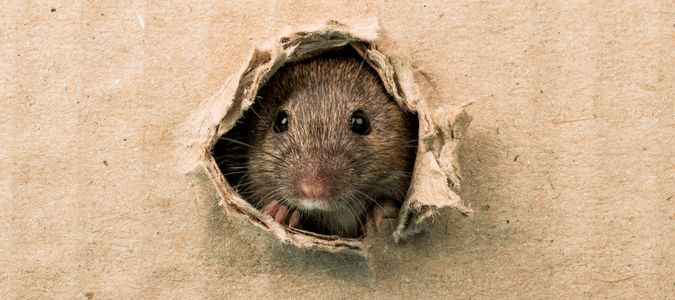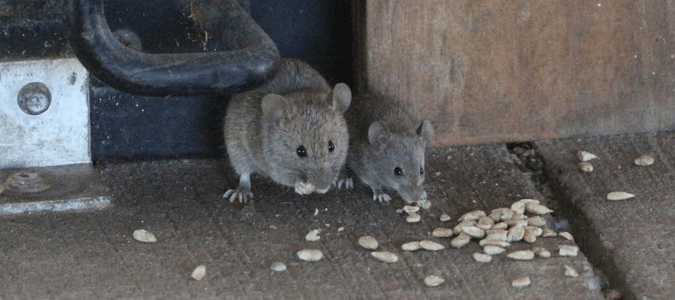Florida is home to a variety of rodent species, including rats, mice, squirrels and others. It’s valuable for Florida homeowners to learn how to identify the different types of rodents they may encounter.
Some rodents in Florida, such as house mice, roof rats and Norway rats are more commonly found indoors than others. Noticing the signs of these rodents can help homeowners catch an infestation before it can get out of control.
It’s also important to know about the appearance, habits and diet of Florida rodents. Rats and mice are excellent climbers, swimmers and jumpers and can make their homes in a variety of locations in your house.
Finally, learn simple ways to deter mice and rats from entering your home. If you already have an infestation, call a pest control specialist today.
Types of Rodents in Florida
Several types of rodents call Florida home, and it isn’t limited to mice and rats. Here are the most common types of rodents in Florida:
- Deer Mice
- Roof Rats
- Norway Rats
- House Mice
- Pack Mice
- Southern Flying Squirrels
- Eastern Gray Squirrels
- Southereastern Pocket Gophers
- Tree Squirrels
- Meadow Voles
- Chipmunks
- Muskrats
- American Beaver
- Shrews
- Moles
The last place you want to see a rodent in Florida is inside your home. If you have a rodent problem, call a pest control specialist today. Let’s dive more into the most common types of rodents you may find in or near your home.
The House Mouse
The house mouse is the most common type of rodent in Florida to infest homes. Because of their nocturnal nature, they can live in homes for some time before being noticed by homeowners.
House mice have light to medium gray fur with cream-colored underbellies. Some house mice may have light brown fur instead of gray. Their bodies measure between two and a half to just under four inches, not including their tails. They have long tails that often measure the full length of their bodies, also between two and a half to four inches long.
Despite being annoyances, house mice have cute faces. Their ears are large and sparsely covered in fur. They have beady black eyes and pointed noses. Their bodies are round and they have dainty front and back feet.
Even though house mice are excellent at hiding and only leave their nest at night, they leave behind signs during the day. For example, you may see their droppings or grease marks from their fur on your baseboards. House mice typically only run back and forth between their nest and their food source, so where you spot these signs is a good indication of their runway area.
House mice build their nests near their food source so that they don’t have to travel uncovered and risk running into predators like you or your pets. They also prefer dark and warm areas, so they often build nests behind kitchen appliances.
Other common places to discover house mouse nests include the cabinet under the kitchen sink, the pantry and inside unused drawers. While they usually nest in the kitchen to stay close to their food source, it’s also possible to find them in your basement or garage.
Indoor house mice steal materials from your home to build their nests. They like soft materials that are easy to carry, so they look for paper, string, mattress and pillow stuffing, linens and other fibrous materials. If you spot loose materials where they don’t belong in your home, that could be a sign that a house mouse colony has moved in.
House mice are omnivores who will typically eat whatever they can find; however, they prefer a vegan diet of fruits, vegetables, nuts, grains and seeds. If these foods aren’t available, they will also eat meat, dairy, fish, paper and plant matter. They are known for digging into trash and compost bins for their food.
Like other types of mice, house mice are food hoarders. When they are awake at night, they scurry back and forth from their nest to their food source to hide more food in their nest. They eat in their nests instead of out in the open to stay safe from predators.
House mice also use their nests to raise their pups. They are rapid breeders, and a female house mouse can have up to ten litters of pups per year. She can mate again almost immediately after giving birth, and they are only pregnant for three weeks.
It doesn’t take long for a house mouse population to get out of control. If you see signs of an infestation in your Florida home, call a pest control expert right away.
The Roof Rat
It’s easy to mix up mice and rats; however, the two species have several differences. For example, roof rats in Florida are much larger than house mice. Also known as black rats or ship rats, roof rat bodies measure between six and eight inches. Their tails are even longer than their bodies, measuring between seven and ten inches.
Roof rats have dark brown to black fur, and sometimes the two colors are interspersed. They may also have black, gray or white underbellies.
Another difference between the roof rat and the house mouse is that roof rats have long and slender bodies. However, their face structure is similar. Roof rats also have black eyes, large ears and pointed noses.
As their name suggests, roof rats prefer to live in high places. Homeowners often discover their nests in the attic, on the roof, inside walls and in other upper parts of the home. Outdoors, they like living in covered areas such as shrubbery, fruit trees and wood piles.
They are excellent climbers and often enter homes by climbing trees onto the roof and looking for entrance points. Roof rats can enter through a hole that is only the size of nickel. They can also gnaw their own opening. They have strong teeth that can gnaw through wood, drywall and aluminum.
Roof rats often live outdoors, but they may seek indoor shelter during the winter or to stay safe from predators. These pests make their nests with whatever soft materials they can find, such as shredded paper, wall insulation and fabric. They may also use plant matter like leaves and twigs.
Like house mice, roof rats are nocturnal. Another similarity is their diets. Roof rats are also omnivores who prefer a plant-based diet. However, they will eat whatever they can find.
Norway Rats
Norway rats are one of the largest types of rats in Florida that homeowners will find inside their houses. In fact, Norway rats are often mistaken for muskrats because of their size. Their bodies measure up to ten inches, and they have hairless pink or brown tails that are equally as long.
Also known as brown rat or sewer rat, Norway rats are covered in coarse brown or dark gray fur. Their underbellies are usually a lighter brown or gray that the top of their body. They also have patches of black hairs dispersed throughout their bodies.
Another easy way to distinguish a Norway rat from a roof rat is by their facial features. Norway rats have small ears and eyes. Their front feet are also significantly smaller than their back feet.
Norway rats live outdoors for most of the year, but they will seek shelter indoors in the fall and winter when they can’t access as much food outdoors. Once inside, they often nest in basements and attics.
These pests are also nocturnal and search for food at dusk and just before dawn. They will eat anything, but they prefer cereal, meat, fish and dog food.
Norway rats are famous for gnawing through tough materials like lead and plastic pipes. They can cause severe home damage by gnawing through your pipes in search of a water source. If you suspect you have a Norway rat infestation, call a professional pest control service.
Can Rats Climb Walls?
Both mice and rats are excellent climbs. Roof rats are more agile than Norway rats; however, they can both reach tall heights. As long as your walls are not completely smooth, they can easily scurry up to the upper floors of your home. Several rodents in Florida can also swim and jump great distances.
How to Deter Mice and Rats
Since mice and rats can enter homes through tiny openings, the best way to deter them is to make sure your home is completely sealed. This includes your roof, foundation, siding, doors and windows. A pest control expert can inspect your home for holes.
You can also deter rodents in Florida by eliminating their food and water source. Do not leave food out on your counters or on dirty dishes in the sink. Store your pantry items in metal containers and keep airtight lids on your garbage and compost bins. If you have pets, take up their food bowls when it is not their meal time.
Lastly, make sure your pipes are secure as a leaky pipe can become a valuable water source for indoor rodents in Florida.
Get Rid of Indoor Rodents in Florida
Rodents make for unwelcome house guests that leave behind messes, spread diseases and cause structural damage. Understanding the difference between the most common types of rats and mice in Florida will help homeowners identify their infestation.
There are several ways to deter rodents, but if you suspect that a species is already in your home, contact a pest control specialist right away.
ABC Can Help Get Rid of Rodents
Dealing with a rodent infestation can be an overwhelming experience. Fortunately, the pest control professionals at ABC Home & Commercial Services can help. We can identify early signs of wildlife infestations and can create a plan to get the problem under control. This way, you and your family members get back to enjoying your home with peace of mind.


